Whiston's comet
The course of solar activity has not yet been fully explained by any theory. Recognition of certain regularities in climate phenomena could help. If such a model was good enough, it would then be possible to infer what exactly could be the cause of these phenomena.
The following paragraphs are intended to show some correlations, patterns that correspond to some known climatic or solar extremes. We are considering the possibility of creating these patterns by composing a hypothetical cycle W with known cycles of the planets Uranus and Neptune.
The aim is not to prove that there exists a body W (Whiston's comet), just to present a model for comparison with reality or with other concepts.
William Whiston| Whiston, William 1667-1752, English theologian, historian and mathematician, popularizer of the ideas of Isaac Newton. |
Period 575.5 years
Calculation error
In 1696, English scholar William Whiston published a claim that a comet exists with an average period of 575.5 years. The comet was to appear in years 531, 1106 and 1682 and also in 44 BC. According to Whiston, it could cause the Flood in 2346 BC.
The period of 575.5 years was derived by Whiston's contemporary Edmond Halley. He got along from a simple calculation: if the comet appeared before 1682 with certainty as well in 531, its period must be a divisor of 1682-531 = 1151 years. Taking into account other clues, he came to a period of 575.5 years.
Edmund Halley| Halley, Edmund 1656-1742, English astronomer, mathematician and physicist. He devoted himself to geometry - designed a new method for more accurate measuring the distance of the Earth from the Sun. He watched primarily the moon, but is known as a comet observer, he predicted the (Halley's) comet return to 1758. He also dealt with the movement of the atmosphere, Earth's magnetism. He participated in the publication of the pivotal Newton's work from 1687. |
Today we know that a comet that appeared at the end of 530 and then in the second half in 1682 was the so-called Halley comet with a period of approximately (1682.76-530.87) / 15 = 76.79 years.
We could conclude the matter with that. Halley and Whiston were wrong, and there is no need to go back ... But we won't do that - at least not until we examine some "suspicious" facts ...
Ian R.G. Wilson| Wilson, Ian R.G. -, researcher in the field of solar activity. |
Wilson's synchronization
Ian R.G. Wilson showed that from the Venus tidal model, Earth and Jupiter in the Sun are based on a synchronization period of 575.52 years.
And the 575 year period is also (as Ian Wilson puts it into context) just a quarter 2300-year Hallstatt cycle.
Viz Hallstatt cycle .Symmetry in spacing of conjunctions
Upon closer observation of the conjunctions Venus-Earth-Jupiter do indeed the period of 575.5 years appears - as a period of symmetry of time intervals of conjunctions. The centers of symmetry are based on years:
111.5 AD, 687.1 AD, 1262.6 AD, 1838.2 AD
17.7.111
 24.1.687
24.1.687
 6.8.1262
6.8.1262
 9.3.1838
9.3.1838
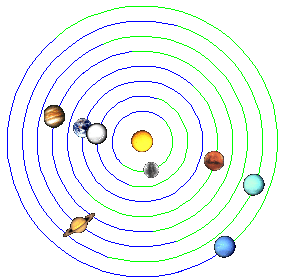
Period 230 years
Hypotetic conjunctions
Let us now consider - hypothetically - that a body with a period of W = 575.5 years is somewhere in the Solar System. If we assume further that its orbit does not deviate significantly from the orbit of planets or not extremely elliptical, we can calculate average synodic periods with known planets.
The first thing we care about is Uranus and Neptune: (U, W) = (84.02,575.50) = 98.38 years, (N, W) = (164.79,575.50) = 230.9 years. The first period resembles the known Gleisberg cycle and corresponds to the period of observed deviations extremes of solar activity from the quadrature of Jupiter and Saturn, respectively. the interval of the so-called collapse of the solar cycle phases.
The time points of "phase breakdown" has emerged in recent centuries about 90-100 years apart. But we are waiting for another such period more than 100 years. If W had an elliptical path, it would be variable explain the distances between Uran-Whiston conjunctions by positioning on the path - at discretion slowing respectively. acceleration of body W in afel resp. perihelu runway.
viz Influence of planets on solar activity .We will look at the 230-year period in more detail in the following paragraphs.
Zdeněk Vašků| Vašků, Zdeněk 1944-2019, Czech scientist, geobotanic, climatologist. In 1997 he published a detailed analysis of the rainy season of the last millennium. He pointed to the existence of four significant periods (the so-called "small pluvials" I.-IV.) and predicted the existence of another period (V) for the years 1995-2035). He was also interested in soil science. |
Little pluvials
Significant rainy seasons - described by Zdenek Vasku, see Our little pluvials.
The centers of the period are approximately I.1100, II.1330, III.1560, IV.1790, V.2020, so they progress with a period of about 230 years.
For more see Solar cycles a Envelope functions.
David Diley| Diley, David -, American meteorologist and climatologist, is engaged in monitoring different meteorological and climatic phenomena and possibilities of their prediction for the needs of sea and air transport (tropical storms, hurricanes, winter weather,...). |
Global oscillations and polar vortexes
The existence of 230-year cycles was also pointed out by David Diley - American meteorologist and climatologist with over 30 years experience in the industry, ... It shows the latest global cooling cycle started in 1789, and now, in 2019 (after just 230 years) it is the turn of the new cycle.
According to the last sentence, the beginnings of cooling for years are: 179, 409, 639, 869, 1099, 1329, 1559, 1789, 2019.
Note that these years correspond almost precisely to the centers of small pluvials.
See Polar vortexes and also Global Weather OscillationsNeptune-Whiston conjunctions
We proceed to the description of hypothetical conjunctions. Consider a body with a period of 575.5 years, which was on 1.1.2000 heliocentric longitude approx. 320 dg.
The conjunction of such a body with Neptune comes approximately in the coming years, creating a five-leaf, 144 dg / 230 years (ie period 2 * 575.5 = 1051 years).
Rok U N W
859,85 104 333 327 ------------
1090,05 13 118 111 (Oort) Pluvial (I.)
1320,25 286 259 255 * (Wolf) Pluvial (II.)
1550,45 189 43 39 (Sporer/Suess) Pluvial (III.)
1780,65 88 186 183 - Pluvial (IV.)
2010,85 359 328 327 * - Pluvial (V.)
The extremes observed in the previous paragraphs, eg 1559-1560, 1789-1790, ... they fit into the times of about 10 years after these conjunctions.
Extremes of solar activity
Solar activity and quadratures
Extremes of solar activity are not always associated with the quadrature of planets. However, there are indications that the quadrature is involved in some way in the Solar Activity. In some periods, the quadrature of the Solar Activity proceeds completely synchronously. We looked for possible connections on the page:
Influence of planets on solar activity .For example, the quadrature of the planets Uranus - Neptune with a period of about 85.5 years, respectively. 171 let progress in correlation with the 180-year period, which is associated with solar activity and the climate often cited. However, all the observed fluctuations cannot be explained in this way.
In climatic data they appear longer periods, incommensurable with the period Uran-Neptune. Therefore, it seems natural to consider the source of these the fluctuations may be some distant body beyond the orbit of Neptune.
Immanuel Velikovsky| Velikovsky, Immanuel 1895-1979, Russian (Belarusian) scientist, doctor, psychiatrist, author of books on ancient history and astronomy. Comparison of the old texts leads to the determination of the period when the Solar System is present something unusual happened (worlds in collision - 1450BC and 750BC). His theories have become popular, but at the same time the target of great criticism. |
Correlation with Velikovsky's structures
Russian scientist Immanuel Velikovsky in an engagingly written book "Worlds in a Collision" he came up with the idea of the catastrophic events that happened recently history in the Solar System.
We leave aside what hypotheses Velikovsky derived from his observations. We will only notice the following fact: Velikovsky placed two main ones events up to approximately 1450 BC and 750 BC, ie 700 years apart.
The difference of only ten years divides the 700-year period from a possible 690-year period, which is based on three times the 230-year period (Vašků / Diley).
We could put Velikovsky's hypothesis as unscientific. However, they fit exactly into the scheme we have created and followed above. Hypothetical body with period 575.5 years and phase 320 dg on 1.1.2000. comes into conjunction with Uranus and Neptune in the following years:
Year U N W
-2823,35 167 207 183 Velikovsky (m-1)
-2132,75 252 275 255 Velikovsky (m-4)
-1442,15 328 343 327 * Velikovsky (m-7)
-751,55 41 52 39 * Velikovsky (m-10)
-60,95 120 122 111 Velikovsky (m-15)
629,65 205 191 183 Velikovsky (m-17)
1320,25 286 259 255 Velikovsky (Wolf)
2010,85 359 328 327 Velikovsky
On the right side we have shown correlations with some climatic minima (m-1, ... m-17, Wolf).
Quadratures of Neptune-Whiston
Fluctuations in solar activity over the last millennium is derived from 14C isotope variation (Eddy, JPL - Carl, ...), data according to Schove (1955), Nagovitsyna (1997), Rigoza (2001), ...
Despite the variations that exist between the results of different methods, it is possible to select some significant maxima from the data. As such we consider maxima around the years approx. 1020, 1150, 1250, 1375, 1520, 1600, 1720, 1780, 1840, 1950.
Explain these maxima only from the quadrature of Uranus-Neptune or others configuration of known planets failed. Now we will try to apply our model with a body with a period of 575.5 years to the data (phase - with respect to the observed data - we will only slightly adjust here, from 320 dg to 323 dg for 1.1.2000).
For Neptun-Whiston quadrature we get data:
1030.5, 1145.4, 1260.1, 1376.4, 1492.0, 1606.4, 1722.3, 1838.5, 1953.0, 2068.3
The only significant difference from the selected highs is the year 1780. After explaining this maximum, as well as explaining the increase in maximum in 1950-1960 we would have to gain the quadrature of the planets Uran-Neptune.
Hallstatt cycle correction
In the data of the previous paragraph, we may have noticed 1260.1 and 1838.5. These years fit approximately into the conjunction diagrams of the planets Jupiter-Venus-Earth (Mars).
See Hallstatt cycle .By the Hallstatt cycle adjustment, the average period of Neptune-Whiston, ie (N, W) = 230.87 years, change to W = W * 2/5 = 230.2 years. This corresponds to extreme distances of approximately 115.1 years. Hence the extremes for years:
1032.4, 1147.5, 1262.6, 1377.7, 1492.8, 1608.0, 1723.1, 1838.2, 1953.3, 2068.4
1032.38 1147.54
1147.54
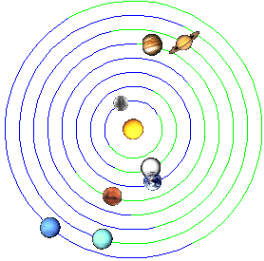 1262.61
1262.61
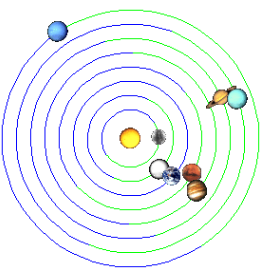 1377.77
1377.77
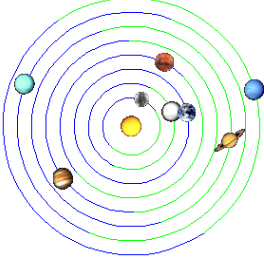 1492.85
1492.85
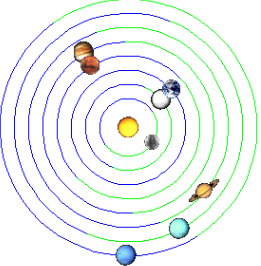
1607.92
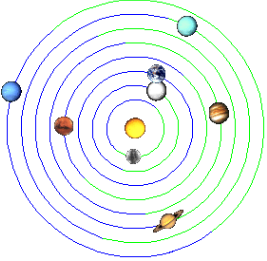 1723.08
1723.08
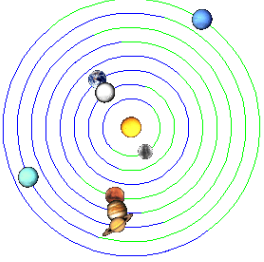 1838.19
1838.19
 1953.31
1953.31
 2068.42
2068.42

Minima of solar activity
In accordance with the previous paragraphs, the opposition and conjunction Neptune-Whiston correlate with minima of solar activity:
1087.1 (Oort), 1203.5 (?), 1318.7 (Wolf), 1433.3 (Stacey), 1549.3 (Sporer), 1665.2 (Maunder), 1779.7 (?), 1895.2, 2011.7
The most controversial periods are around 1203 and 1780, when it was observed high activity (in 1780 a strong hurricane appeared). By contrast, r.1433 is exactly in line with the so-called zero point defined by Stacey (In the years 1400-1440 a strong cooling was described).
Fivefold symmetry
Cycle 115 years
Correlated with previous data, the 114-year cycle of Solar Activity described by M.G. Ogurtsov (2002) and 115-year climate cycle by Nicola Scafetta (2016). Nicola Scafetta's conclusions were supported by other scientists, such as Tom Mango. Some have relied on Meton's 19-year cycle to support the 114-115-year cycle. Another related cycle is the Keeling / Whorf resonance cycle of 1: 3 between Jupiter and Saturn: (J / 1, S / 3) = 57.01 years. The 57-year period also constitutes approximately 1/3 of the Uran-Neptune conjunction period.
We are talking about five-fold symmetry, because the 115-year cycle is one fifth of the 575-year cycle cycle described above. In the next paragraphs, we will focus on the 23-year cycle, which is a fifth of the 115-year cycle.
Charles Abbot| Charles Greeley Abbot 1872-1973, American astrophysicist, director of the Washington Observatory in 1906–1944. He examined the infrared part of the solar spectrum, constructed the measuring instruments and was the first to measure the solar constant. He pointed to the 23-year cycle of temperature changes on Earth. |
Abbot's cycles
C.G.Abbot observed the dependence of terrestrial temperature on solar radiation. He noticed, in the decomposition into 12 functions of periods from 7 months to 23 years, that the components are aliquots of a 23 year period.
Together with the basic 23-year period, some of its multiples were observed. Especially 46 years in the fluctuation of the Great Lakes - where, in the years 1840-50, 1885-95 and after 1929 (ie on average about 1844-1890-1936), great droughts were documented. A similar period (46 years) was observed also in cycles derived from tree rings.
Periods (23 years and 46 years) were subsequently observed (in temperature variations from normal) not only in North America, but also in Western Europe, South Africa and Australia. The periods of 69 years and 92 years were also documented (we notice the periodicity of 69 years on the earthquake page.) The existence of a 23-year cycle in the Maunder minimum period was confirmed later (in 1982) by S. Hameed and P. Wyant.
We are interested in the next multiple of the sequence of 23, 46, 69, 92 years, ie in the 115-year period, by which Abbot's cycles follow our observations of the previous paragraphs.
Other remarks
Halley's comet
The extent to which the comets of Halley's comet fit into the grid created by Hallstatt cycle is described in the following diagram (differences are in the Delta column).
Halštat Halley Delta U-N N peri X peri? N-Pluto
-233.87 -240.6
-157.13 -164.1 -150 -150
-80.39 -85.42 -65.44
* -3.65 -10.23 6.58
73.09 66.05
149.84 141.21
* 226.62 218.30 8.32 235 235
303.32 295.30
380.07 374.06
* 456.85 451.50 5.35
533.55 530.87
610.30 607.23 623.79 620
* 687.08 684.40 2.68
763.78 760.44
840.53 837.15
* 917.31 912.55 4.76
994.01 989.67 1005
1070.76 1066.24
* 1147.54 1145.30 2.24
1224.24 1222.69
1300.99 1301.81 1307.34
* 1377.77 1378.86 -1.09 1390 1390 1390
1454.50 1456.44
1531.22 1531.65
* 1607.92 1607.82 0.10
1684.70 1682.76
1761.45 1759.20 1775
* 1838.19 1835.88 2.31
1914.93 1910.30
1991.68 1986.11 1992.56
* 2068.42 ?
In the U-N column are selected conjunctions Uranium-Neptune, in column N-Pluto similarly selected Neptune-Pluto conjunctions. In the column "X peri" there are hypothetical pearls of the body (X) with a period of ca 385 years, that we thought elsewhere. Period [N, X] = [164.77, 385.0] = 115.39 years.
Eris
A period of 575.5 years does not have to be a period of a distant body, but it may be related to its movement. In 2 * 575.55 years = 1151.1 years, Jupiter will perform 97.04 orbits. if we wanted to synchronize the movement of hypothetical comet W with Jupiter, we would have to change the period W so that the offset of about 0.04 * 360 dg = 15 dg is called. The movement of 375 dg / 575.55 years corresponds to a period of approximately 552.5 years (1105 years / 2).
For example, Gaillot (X = 536.1 years, after the 1st revision of 1909) directed the planet X to the orbit with a period of about 500-600 years, W.H.Pickering (X = 556.6 years, "Planet P", after revision 1928), H.E.Lau (594 years).
In 2003 a dwarf planet (plutoid), later named Eris, was observed. Eris orbits the Sun with a orbital period of about 557.15 years and an eccentricity of 0.44. Eris is a relatively large body (about 1/4 of the weight of Pluto) and has its own moon (Dysmonia). However, if we are considering the deflection of the Sun relative to the Solar System barcentre, its effect - for example compared to Uranus or Neptune - seems to be negligible.
600-year cycle
Let us now consider the simultaneous action of the Uran-Neptune, Uran-Whiston and Neptun-Whiston quadrature. Period (N, W) / 2 = 115.4 years, (U, W) = 98.4 years and (U, N) / 2 = 85.7 years. 6 * 115.4 years = 692 years, 7 * 98.4 years = 688 years, 8 * 85.7 years = 685.6 years. This is a 690-year cycle that we observed above in relation to Velikovsky.
There is also 5 * 115.4 years = 577 years, 6 * 98.4 years = 590 years, 7 * 85.7 years = 599.9 years. These three cycles converge every 580-600 years.
The 600-year cycle was observed in Solar Activity - eg Rubashev (1949) and I. V. Maksimov (1949). Its reality is confirmed by more recent research - I.G.Usoskin, K. Mursula, S. Solanki (2004).